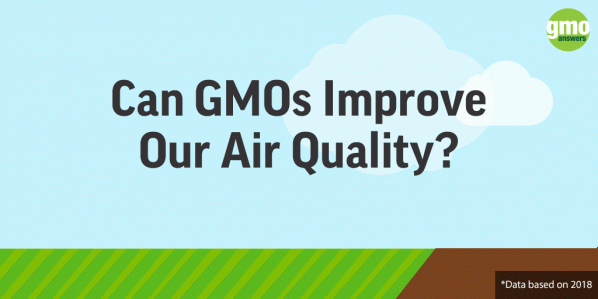Question
Today, someone tweeted the following: "Did you know? With the introduction of GMOs in our food, pesticide use went from 1.5 million pounds in 1999 to 90 million pounds in 2011."
Is this accurate and/or can you clarify?
Submitted by: FrankFLG
Answer
Expert response from David Tribe Ph.D.
Senior Lecturer, Agriculture and Food Systems/Microbiology and Immunology, University of Melbourne, Parkville, Australia
Thursday, 19/12/2013 16:01
Moderator: A very thorough assessment of this research is linked here and highlights several flaws, inaccuracies, assumptions, and misleading use of data (available here): A review and assessment of ‘Impact of genetically engineered crops on pesticide use in the US – the first sixteen years: Benbrook C (2012)’ –Environmental Sciences Europe vol 24: 24 (September 2012); Graham Brookes, PG Economics, UK; Janet Carpenter, J E Carpenter Consulting LLC; Dr Alan McHughen, University of California, Riverside
For a synopsis, Dr. David Tribe drafted the following for his blog, GMO Pundit.
Independent review and assessment of paper ‘Impact of genetically engineered crops on pesticide use in the US' – the first sixteen years by Benbrook C (2012) concludes that the paper is flawed being based on inaccurate claims, biased assumptions and misleading use of official data.
General observations and criticisms
This paper makes a number of broad claims relating to negative health and environmental impacts associated with the use of genetically modified/genetically engineered (GM/GE 1) crops in the US. These changes, the author claims, are caused by the widespread adoption of GM crops and to ‘the growing number and geographical spread of glyphosate-resistant weeds’. The author goes on to claim that:
- The basis for his conclusions derive from analysis of official United State Department of Agriculture (USDA) pesticide use data;
- That there are few comprehensive estimates of the impacts of GM HT crops on herbicide use and that;
- Other analysts are wrong when they examined the impact of pesticide use change with GM crops in the US and came to completely different (opposite) conclusions to him.
- For those reviewing the issues examined in the Benbrook (2012) paper, the following summary points should be noted:
- Inaccurate claim: In the press release for Benbrook (2012) the author claimed that this is the first peer reviewed paper to examine pesticide use changes with GM crops in the US.
There have been numerous papers by other analysts that have examined this issue in peer reviewed papers. The first named author of this review and assessment document for example, has written thirteen peer reviewed papers on the impact of GM crops, nine of which examined pesticide use changes with GM crops and all of which pre-date Benbrook (2012) 2;
- Confirmation of GM insect resistant (GM IR) impact on insecticide use: Benbrook (2012) confirms the (consistent) findings of other analysts’ work that the use of GM IR technology has resulted in important reductions in insecticide use on these crops that would not have occurred with conventional technology
- Failure to acknowledge the environmental benefits arising from use of genetically modified herbicide tolerant (GM HT) technology. There is no discussion in Benbrook (2012) of the facilitation role of GM HT technology in helping many farmers in North (and South) America adopt no/reduced tillage production systems3 which has resulted in important reductions in greenhouse gas emissions. For example, US GM HT crops contributed, in 2010, to the equivalent of removing 11 billion pounds (5 billion kg) of carbon dioxide from the atmosphere or equal to removing nearly 2.25 million cars from the road for one year. In addition, whilst usage of broad spectrum herbicides, notably glyphosate (and to a lesser extent glufosinate) has increased significantly, usage of less environmentally benign products such as pendimethalin, metribuzin, fluazifop and metalochlor has fallen substantially, leading to net benefits to the environment 4;
- Inaccuracies and biased assumptions: Benbrook (2012) uses assumptions relating to herbicide use on US crops that do not concur with actual (or recommended) practice. As a result, he overstates herbicide use on, for example, US GM HT soybeans and significantly understates use on conventional (non GM) crops;
- Misleading use of official data: Benbrook (2012) states in several places that the pesticide impact data are based on official, government (USDA) pesticide usage data. Whilst a USDA dataset is used, its limitations (namely not covering pesticide use on some of the most recent years and not providing disaggregated breakdowns of use between conventional and GM crops) mean that the analysis presented in Benbrook (2012) relied on his own interpretations and extrapolations of usage and cannot reasonably claim to be based on official sources. In particular, the herbicide usage assumptions on conventional crops, if they replaced GM HT traited crops, are significantly understated and unreliable. It is therefore not surprising that Benbrook (2012) concluded that GM HT crop use in the US resulted in an increase in US herbicide use. This contrasts sharply with the findings of other peer reviewed analysis 5 that estimated that GM crop adoption in the US reduced pesticide spraying in the US, eg, by 542 million lbs (246 million kg: -9.6% 1996-2010) 6 relative to what might reasonably be expected if the crops were all planted to conventional varieties.
How Do GMOs Benefit The Environment?



